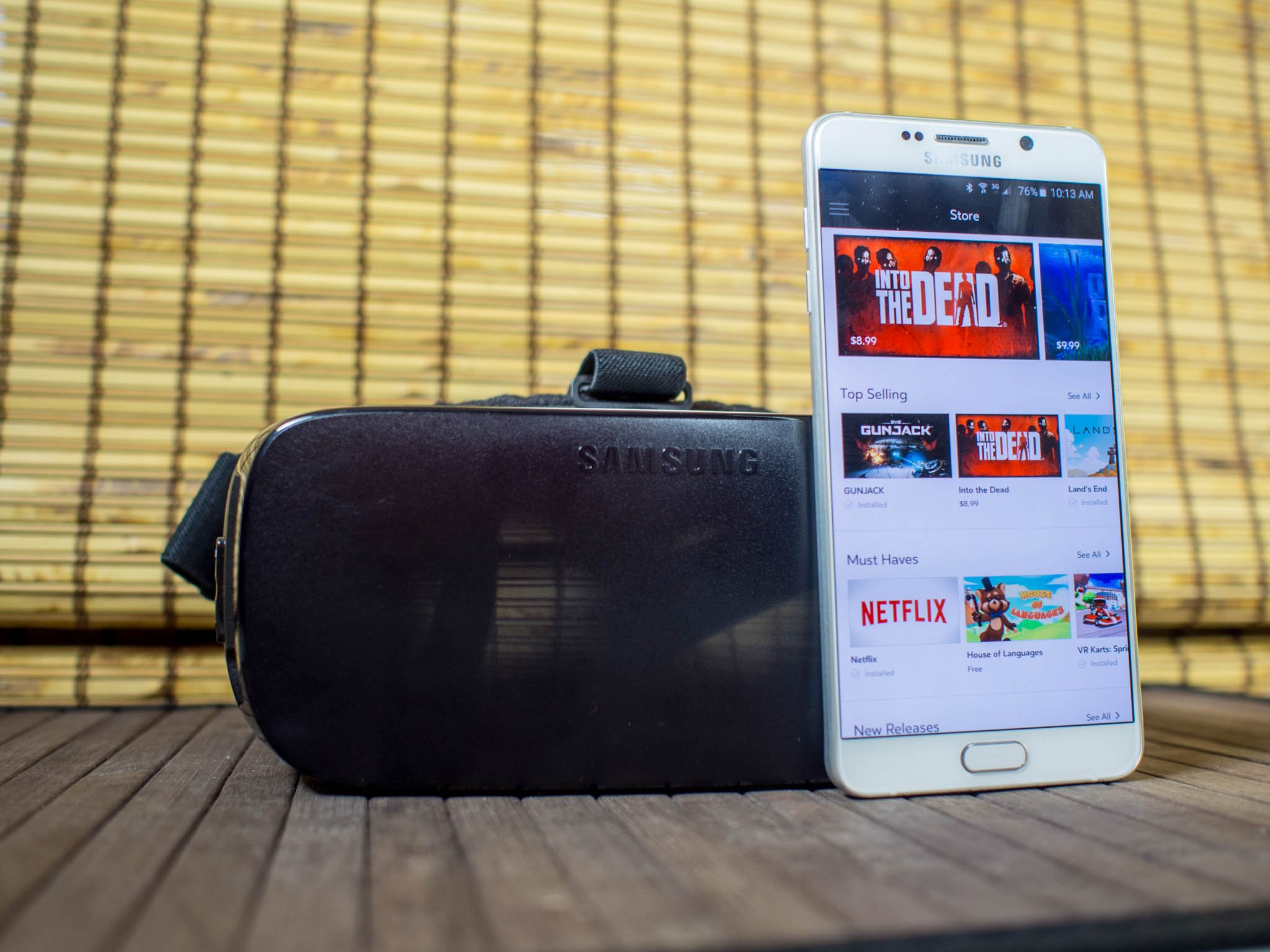Samsung has finally dropped the Innovator Edition tag from its virtual reality collaboration with Oculus, and along the way the company has made dozens of little changes to the hardware that holds your phone in place. While everyone who doesn’t have a 2015 Galaxy or Note phone will be relying on Google Cardboard for their reasonably priced virtual experiences, the Samsung Gear VR takes your phone and kicks it up a notch with an impressive starter library of games and several great video apps for just about every occasion.
Let’s take a look at how things have changed while Samsung and Oculus fine-tuned this experience.
Samsung has promised this new Gear VR is lighter, more comfortable, and resolves a lot of usability issues found with the original. For the most part, these claims pan out. The casing is noticeably lighter than the original Gear VR, the padding around the face is more comfortable, and the nose cavity is shaped to support more people without pressing awkwardly. The opening is also wide enough to allow for just about every kind of eyeglasses to be worn while using the headset, which is fantastic. A pair of slits along the bottom of the casing create enough airflow to address fogging problems in most environments, but not everywhere, and those slits now let in a little bit of light where previously the headset was total darkness aside from the display.
The most noticeable change to the outside of the Gear VR when actually using it is the touch pad. It’s shaped much more like a D-Pad now, with a button in the middle for selecting things. If you’ve used a previous Gear VR, this setup is a little confusing since nothing about the behavior of the touch pad has changed, just the shape of the plastic. You can swipe up from the left cavity, tap to select from anywhere on the pad, and the headset will act the same way it always has. It’s a nice set of guide grooves for folks that need them, which is the point. Once you’ve adjusted to the setup, navigating the Gear VR is just as easy as it was before.
For those feeling adventurous, there’s a microUSB port on the Gear VR now to charge your phone while you use VR. Given the history of overheating warnings during normal use with the Gear VR, it’s going to take some testing to see how useful this port actually is. The good news is, in our early tests, it’s not nearly as easy to overheat a phone in this new Gear VR. In every test we’ve done so far, eye strain caused the headset to come off well before any heat warnings showed up. There’s still a lot of testing to be done here, but so far heat on the Note 5 in the Gear VR doesn’t seem to be nearly as big a concern.
If you were hoping for some software changes to go along with these hardware changes, you’re about to be disappointed. The Oculus Store still functions exactly the same way it did before, which means you can’t do anything with it until you plug the phone into the headset and hear a voice tell you to pull the phone out of the socket so you can install the Oculus apps and create an account. Once you’ve created an account you’ll see the Oculus Store still doesn’t have a search function of any kind, so you need to scroll through lists to find the apps you want. This was almost ok when the Oculus store wasn’t very big, but there are now a ton of apps in this store and it needs search badly.

Once you’re in a game or video app, it’s not hard to see why the Gear VR is worth dropping the $99 instead of just using Google Cardboard. Head tracking is smoother in every direction, the touch pad adds more functionality for games, and even with the slight light bleed from the air vents the experience is plenty immersive. The new lineup of games, a list that now includes unique games from Eve Online creator CCP and Monument Valley creator UsTwo Games, are just the start of what this combination is capable of.
There’s a lot to like here already, and as we dive deeper the big questions about battery life and overheating issues from past versions of the Gear VR will need to be answered. For now, Samsung and Oculus seem to have successfully made an advanced VR headset at a reasonable price point.